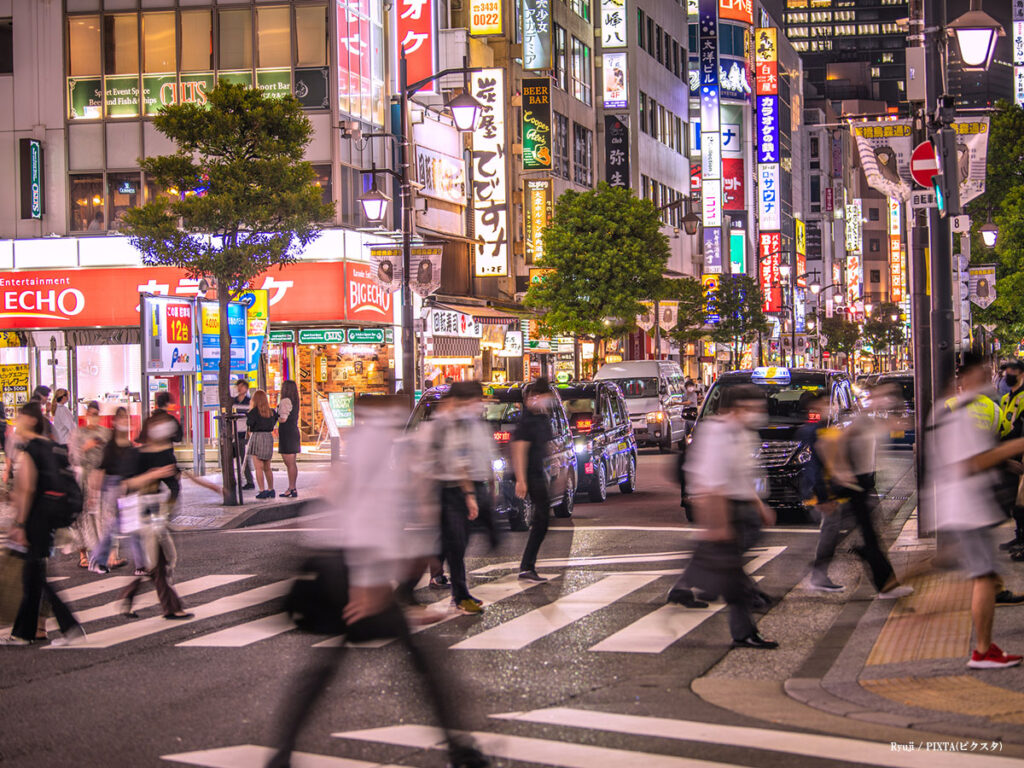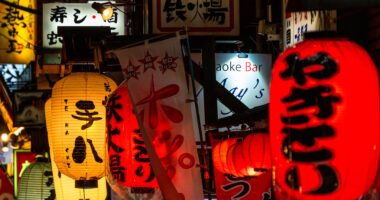Among Tokyo’s many bustling districts, Shimbashi offers a unique kind of charm.
While it’s a business hub lined with towering office buildings, just step into the backstreets and you’ll find rows of glowing red lanterns and an eclectic mix of bars with a distinctly local flavor.
The scene feels like stepping back in time to an older Japan.
For Tokyo’s working adults, Shimbashi is a down-to-earth social haven where they can unwind after a long day. For international visitors, it’s a rare chance to catch a glimpse of everyday life in Japan.
Access guide: how to get to Shimbashi from Tokyo’s major stations
Located in central Tokyo, Shimbashi is extremely convenient to access. Travel time from the city’s major stations is under 30 minutes, making it a great base for sightseeing.
Below, we explain how to get to Shimbashi from Tokyo Station, Shibuya Station, and Shinjuku Station, focusing on train routes.
From Tokyo Station to Shimbashi Station
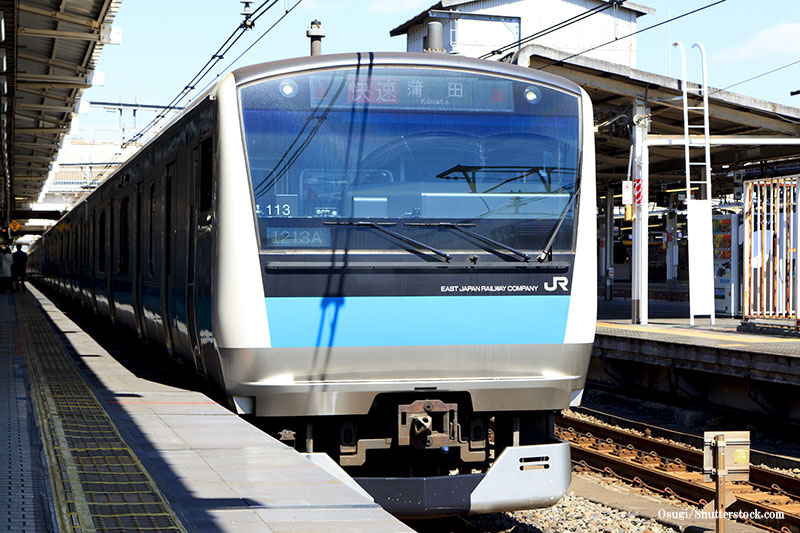
JR Keihin-Tōhoku Line train car
From Tokyo Station to Shimbashi Station, it’s just one stop on the JR Yamanote Line or JR Keihin-Tōhoku Line. The ride takes only about 3 minutes, and the fare is around 150 JPY—making it an easy and affordable trip.
Trains run frequently, so there’s hardly any waiting time.
From Shibuya Station to Shimbashi Station
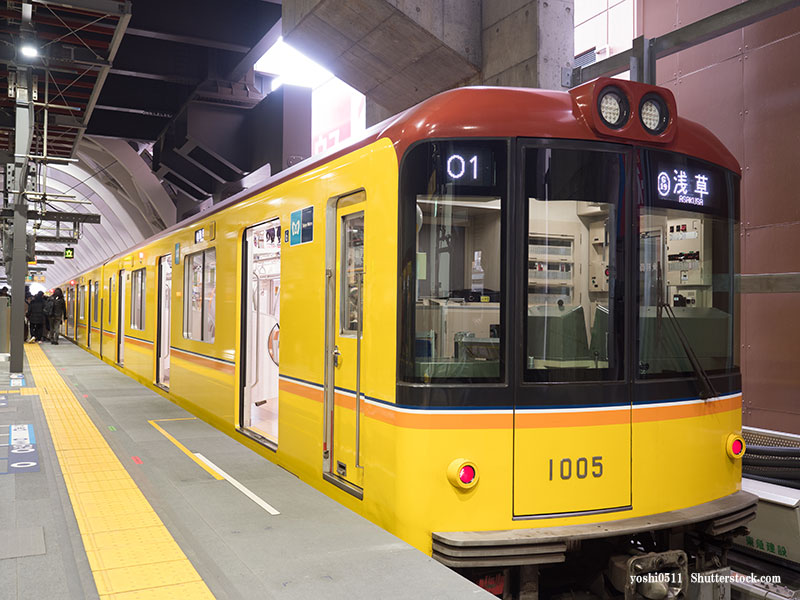
Tokyo Metro Hibiya Line train car
The easiest and most affordable route is the Tokyo Metro Ginza Line, which connects Shibuya Station and Shimbashi Station directly.
The ride takes about 15 minutes and costs around 180 JPY. Since this line runs from Shibuya Station to Asakusa Station as well, it’s also great for sightseeing.
From Shinjuku Station to Shimbashi Station
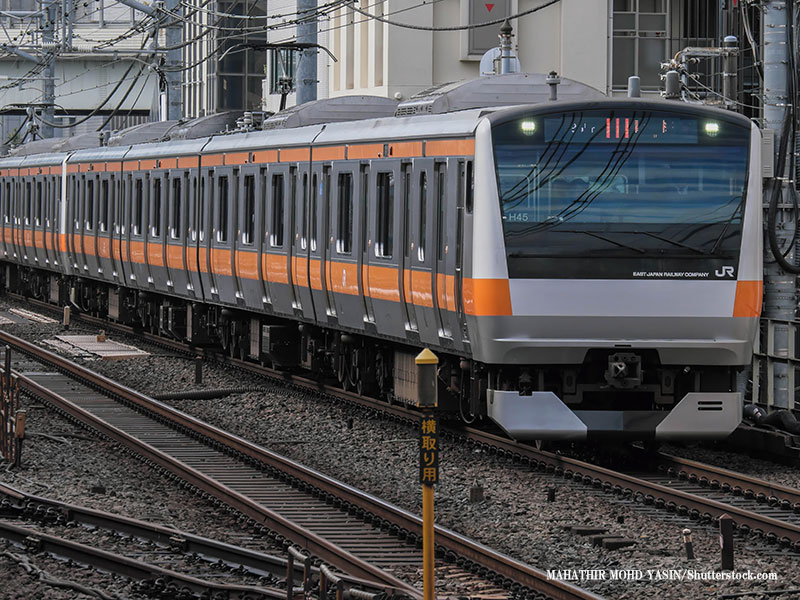
JR Chūō Line Rapid train car
As a major terminal station, Shinjuku offers several routes to Shimbashi.
If you prioritize fewer transfers and faster travel time, we recommend taking the JR Chūō Rapid Line to Kanda Station and transferring to either the JR Yamanote Line or the JR Keihin-Tōhoku Line. The fare is approximately 210 JPY, and the travel time is around 22–24 minutes.
If you’re not in a hurry, you can take the JR Yamanote Line (inner loop) toward Shibuya and Shinagawa for a direct ride to Shimbashi Station with no transfers. This route takes about 30 minutes, and the fare is the same as the transfer route via Kanda.
Note that both routes may be slightly crowded during rush hour, so it’s best to allow a little extra time for your journey.
The history of Shimbashi: where old Tokyo and a modern business district meet
Shimbashi is a truly unique area where Tokyo’s past and present coexist. It is also a symbolic location that developed alongside Japan’s modernization as a business district.
Its history dates back to 1872, when Japan’s first railway line was inaugurated.
With the opening of a line connecting Shimbashi and Yokohama, Shimbashi Station became the birthplace of rail travel in Japan. In front of the station’s West Exit, a steam locomotive is on display, making it a must-see spot for travelers interested in trains and modern Japanese history.
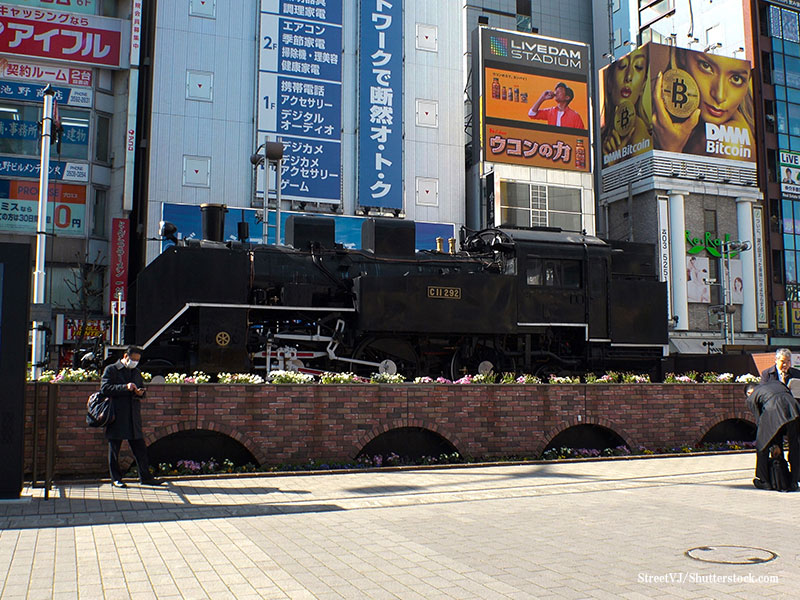
SL Square in front of Shimbashi Station
After World War II, during Japan’s period of rapid economic growth, Shimbashi developed into a central business district. Restaurants and sunakku—also known in English as “snack bars,” where the owner, called a “Mama,” serves customers across the counter and patrons enjoy karaoke—began to cluster in the area, attracting office workers looking to unwind after hours. This helped establish Shimbashi as a social hub for working adults.
Even today, the narrow alleyways around Shimbashi Station retain much of that postwar atmosphere, with lively, old-fashioned izakaya (Japanese gastropubs) lining the streets.
At the same time, redevelopment centered around the Shiodome area has transformed part of Shimbashi into a modern business district filled with high-rise buildings.
This sleek, high-rise landscape—home to TV stations and international corporate offices—represents another side of Shimbashi.
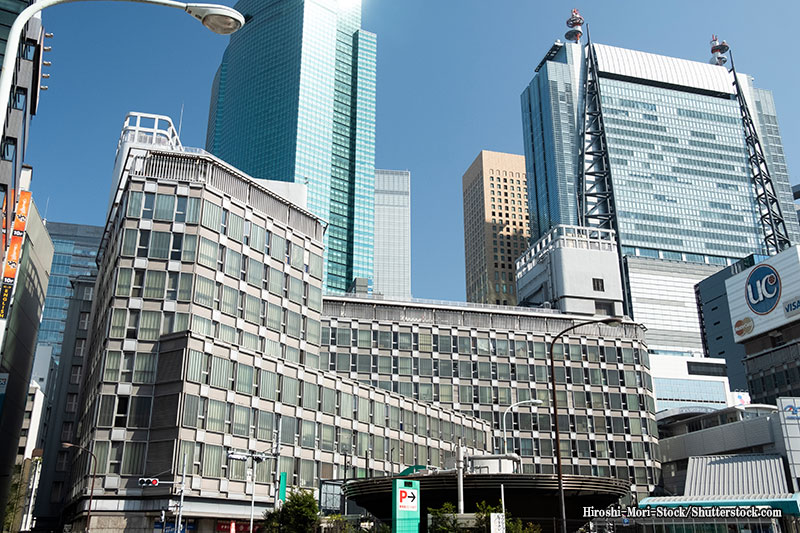
Building complexes in Shimbashi
Shimbashi’s safety: is Shimbashi safe for solo travelers or better for groups?
Shimbashi strikes a great balance—it’s suitable for both solo travelers and groups.
When it comes to safety, Shimbashi is considered relatively secure by Tokyo standards, making it a reassuring destination even for first-time international visitors.
Shimbashi is especially lively at night, bustling with businesspeople unwinding after work. However, alongside the energetic atmosphere, visitors should be cautious of street touts—known as kyacchi, from the English word “catch”—particularly around the station and in some entertainment districts.
There have been reports of unsuspecting customers being lured in and then charged far more than expected once inside the establishment. Always ask to see the menu and prices before ordering. It’s a good idea to understand what you’re getting into before you begin. If it’s unclear or you have any doubts, move on.
To enjoy the nightlife more safely, it’s best to stick to the areas near the station where police patrols are frequent. While it’s generally safe even for women walking alone, it’s still wise to stay alert when walking through back alleys late at night.
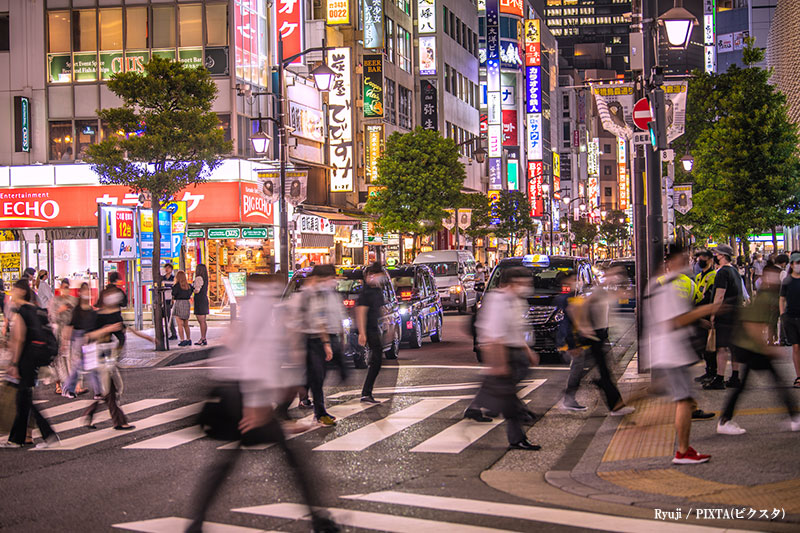
The area surrounding Shimbashi Station at night
One of Shimbashi’s biggest draws is the abundance of standing bars and other establishments that warmly welcome solo diners and drinkers.
It’s not uncommon for conversations to strike up naturally between customers seated at the counter or with the owner, offering unexpected and authentic local experiences.
The culture of enjoying food and drinks alone is well-established here, so even if you don’t speak much Japanese, gestures and a smile often go a long way—part of what makes Shimbashi so easy to enjoy.
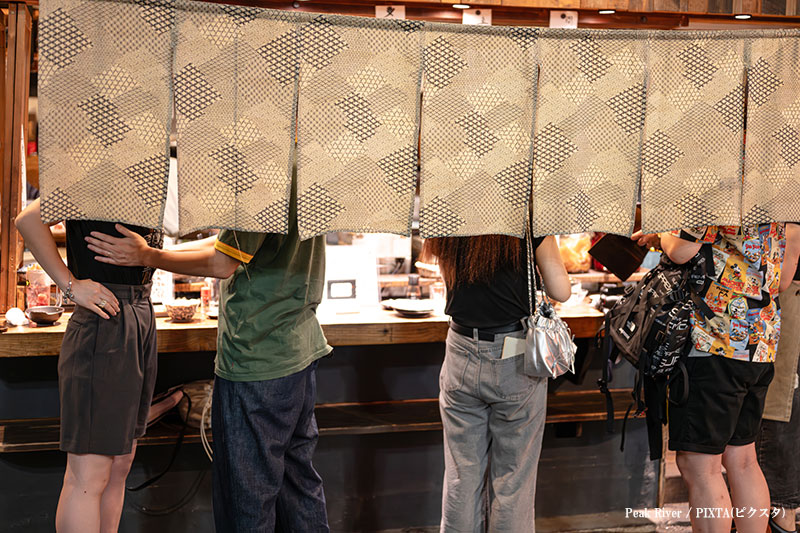
Photo for illustrative purposes
While Shimbashi is friendly to solo visitors, it’s also well-suited for group travel.
There are plenty of restaurants with private rooms, karaoke boxes, and casual chain eateries, making it easy to have fun with a crowd.
And if you end up staying out late and overindulge, you’re in the heart of the city—hotels and taxis are plentiful, so finding a place to rest is never an issue.
For more information about dining and nightlife in Shinjuku, click here.
Shimbashi vs. Roppongi: which is better for enjoying nightlife?
So if you want to enjoy Tokyo after dark, which area suits you better: Shimbashi or Roppongi?
Both have distinct personalities, and the best choice depends greatly on the kind of experience you’re seeking.
Here, let’s compare the features of each area to help you find the perfect fit for your trip.
Shimbashi: a deep dive into local Japanese nightlife

Photo for illustrative purposes
Shimbashi’s appeal lies in its unfiltered, down-to-earth vibe. Its narrow alleys are lined with red lanterns and jam-packed with casual izakayas and standing bars full of after-work regulars.
Many places don’t offer English menus, but that’s part of the fun—sharing drinks shoulder-to-shoulder with locals is one of the best ways to truly immerse yourself in Japanese culture.
The prices are relatively reasonable, and many places welcome solo visitors, making it easy to drop in alone. While it’s not flashy, if you’re looking to spend your night in Tokyo soaking up a local atmosphere, Shimbashi will undoubtedly meet those expectations.
Roppongi: a stylish, international nightlife hub
If you’re looking for a glamorous and upscale night out on the town, Roppongi is the place to be. Lined with Michelin-level restaurants, bars, and internationally diverse nightclubs, it’s a city that never sleeps, attracting people from all over the world.
English support is well established, making it very welcoming for first-time visitors to enjoy with confidence.
However, the price range is somewhat high. Some high-end venues require a dress code, so casual attire may not be permitted.
It’s perfect for those seeking refined spaces and high-quality service, but it might be less suitable if you want to casually bar hop.
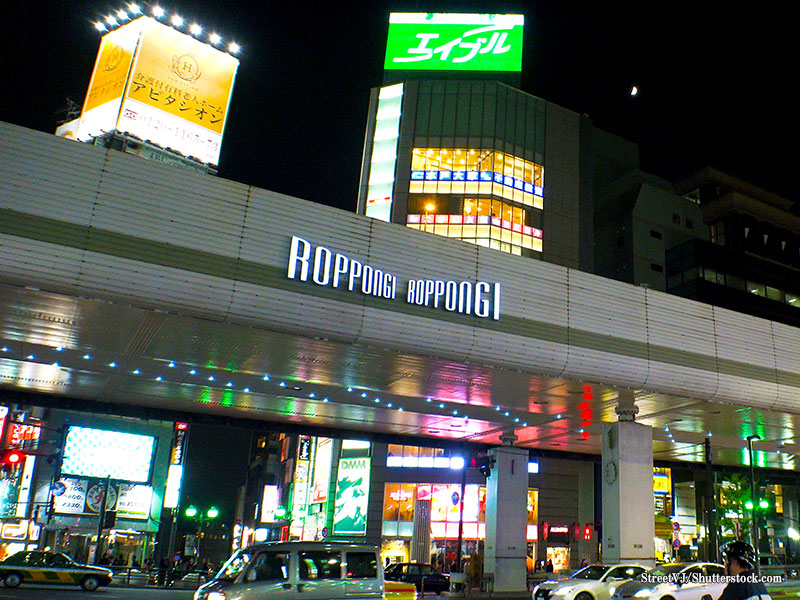
A photo of Ropongi
Shimbashi is a place where a modern business district coexists with a retro atmosphere, allowing you to experience the real Tokyo alongside the locals.
Moreover, its excellent location means it’s just a few minutes from Tokyo Station and easily accessible from Shibuya and Shinjuku, so you won’t waste any travel time.
Whether you’re alone or with a group, Shimbashi’s flexibility means it suits any travel style.
And most of all, its izakaya culture is a treasure in itself—offering deep, authentic experiences that are tough to find elsewhere.
Unlike the luxurious nightlife of Roppongi, the local charm, affordable prices, and warmth of the people here may just make Shimbashi the highlight of your Tokyo trip.
※Information in this article is current as of July 2025.
